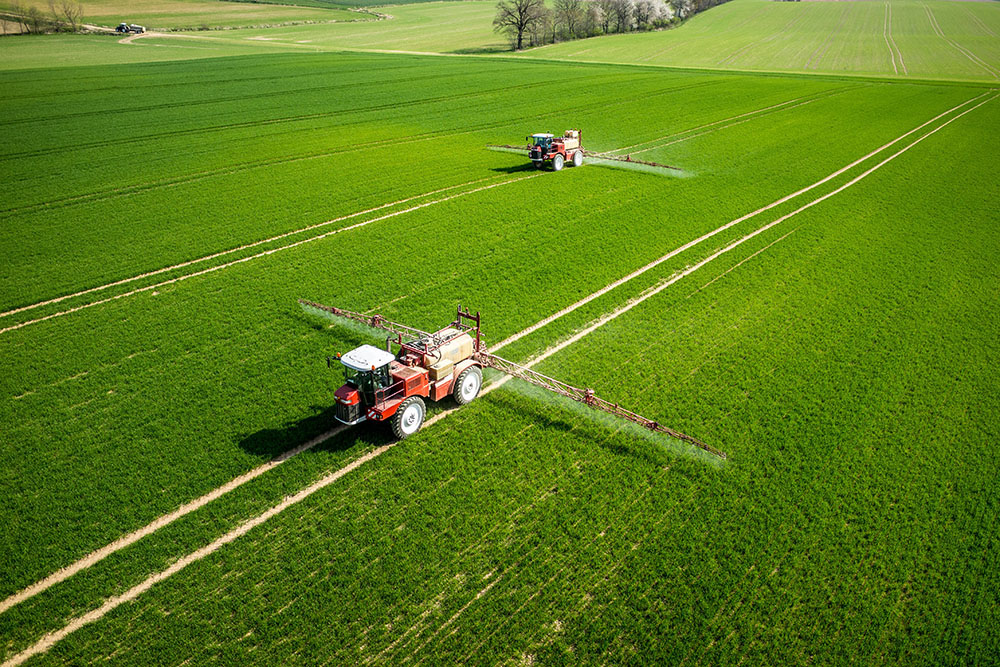
One of the greatest threats to the quality and health of Minnesota’s rivers, lakes, and streams comes in the form of excess chemicals, fertilizers, and sediment from irresponsible agricultural practices.
While these pollutants find their way into our waters in various ways, runoff from single crop farmland is one of the largest contributors.
Fortunately, there is a simple and cost effective measure that can help prevent these pollutants from ever reaching our waters – vegetative buffer strips planted alongside the borders of farmland and waterways as well as other living cover on agricultural land. That’s why Clean Water Action joined with other environmental and conservation groups to form the Buffers Now Coalition immediately following Governor Dayton’s announcement last year to expand buffering of waterways.
The Governor's buffer plan was in response to alarming reports from the Minnesota Pollution Control Agency (MPCA) that an estimated 40 percent of Minnesota’s waters are classified as impaired. This estimate is a result of a study mandated by the Clean Water Act, which requires states to assess all waters, determine if they meet quality standards, and set goals to remedy them if they do not meet standards. As of April 2014, MPCA has identified 4,114 rivers, lakes, and wetlands as impaired. In contrast, since this inventory process began, they have only delisted 35 bodies of water from this list.
In many watersheds where single crop agriculture dominates the landscape, just half or fewer lakes fully support swimming — largely because of excess phosphorus. The chemical, which comes from fertilizer and aging wastewater treatment plants, creates harmful, sometimes toxic, algae for at least part of the summer. This same type of algae shut down the drinking water supply for Toledo, Ohio for three days in the summer of 2014 and left nearly 500,000 people without safe drinking water.
In the southeast, southwest, and across a wide band stretching from the Twin Cities to extreme western Minnesota, less than 40 percent — and many times less than 20 percent — of streams and rivers fully support swimming and recreation, the report said. In those cases, the main problem is elevated levels of E. coli bacteria from human sewage and animal manure. Ultimately, the widespread nature of this problem in farm country warrants government intervention in the form of regulated buffers along waterways.
Buffers are primarily designed to help filter out phosphorus, nitrogen, and sediment by preventing erosion, slowing runoff, and trapping polluted materials. Buffer strips then allow vegetation to absorb any pollutants, preventing them from entering the water supply. These vegetative strips also provide great habitat for wildlife like fish, birds, and pollinators and help to facilitate flood water storage in times of extreme weather.
While buffer strips offer a host of wide ranging benefits, the buffer bill was not met with wide acceptance in the agricultural industry. Agricultural interests at the Capitol, including the Farm Bureau and Minnesota Farmers Union, argued that this was a “one size fits all” approach, and that the State should stay out of how farmers use their land. The Governor and our coalition disagree, because the water that passes farmland is not just their water, but is everyone’s water. Farmers have a responsibility to the rest of us to make sure the water isn’t poisoned when it leaves their land.
The science behind buffer strips has been around for several decades, and indeed some conscientious farmers have actively employed them on their lands for many years. However, this will not work as a voluntary measure. Our waters, especially those near intense single crop agricultural production, are becoming worse, not improving. Moreover, not everyone has been so willing to voluntarily install buffers along the margins of their land, especially when corn and soybean prices are high. Financial concerns often trump those of environmental concern.
This is what made the buffer bill that passed last year so important. It laid the groundwork to make the use of buffers universally required, and offered increased funding for programs to help offset the initial costs of creating them. The bill was not without its faults however. Vague language mired the clauses that dealt with enforcing buffer use, and the Minnesota Department of Natural Resources opted to use outdated county “shoreland classification” and “Public Water Inventory” maps to decipher which public waters required a buffer. These maps often exclude many miles of streams, ditches, and even rivers. These old maps were created by the individual counties who had the authority to determine which of its waterways they wanted to classify as public or not. This means that some streams and rivers that flow through multiple counties may have multiple classifications as it flows through each respective county. These kinds of inconsistencies and unfortunate wording led to grumblings on both sides of the aisle.
Nevertheless, the buffer bill passed into law in the spring of 2015. It was a great improvement over the complete absence of consistent application of enforcement from county to county that preceded it.
Ultimately, the conversation about buffers and their positive impact on water quality is a productive one. However, now is the time to steer that conversation in the right direction towards more protection of our waters not less.